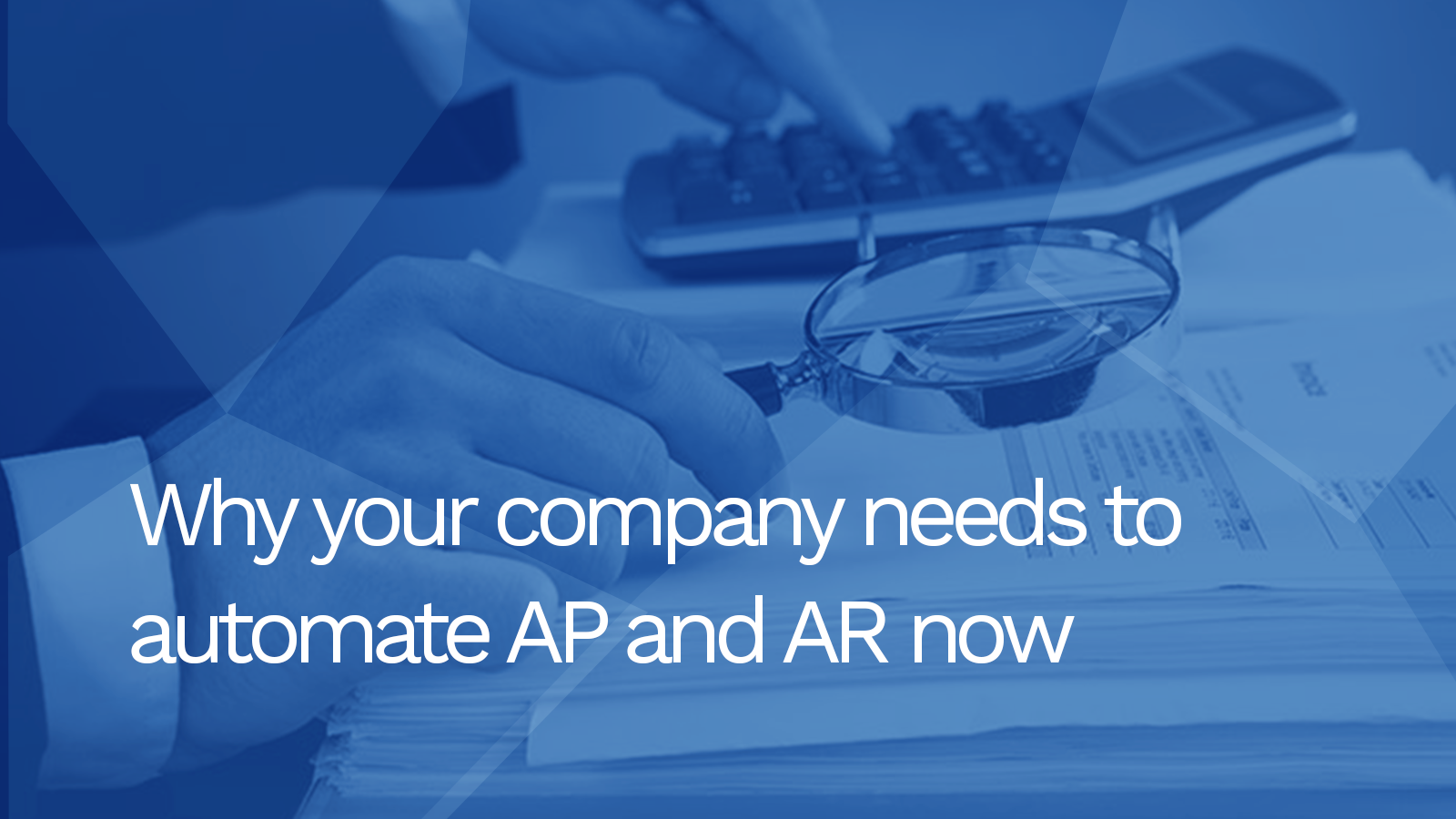
Why your company needs to automate AP and AR now
Imagine communicating with clients through letters instead of emails, or hand-drawing a presentation instead of using PowerPoint. If that seems ludicrous, then why are you still accepting invoices through fax or sending cheques by snail mail? According to a 2019 survey from Pymnts.com, 72% of 2,570 companies it surveyed still receive invoices by postal mail, while 44% arrive through fax. More than 80% of them still pay vendors by cheque.
There is no good reason for accounts payable (AP) and accounts receivable (AR) to be so manual. Think of how much time your team would save if they didn’t have to physically open envelopes and then input invoice details themselves into their systems. Plus, with COVID-19 causing companies to rethink how they operate, whether it’s working more remotely or avoiding physically handing documents, automating AP and AR is a must.
Depending on your company’s size, creating a digital payment environment will also save you thousands if not millions of dollars a year. According to the Federal Reserve Bank of Minneapolis, large-scale adoption of electronic invoicing could collectively save businesses more than US$100 billion. Not only that, but it could help boost revenues by improving efficiency – staff can work on other profit-generating projects than manually inputting invoices or writing cheques – and it would give your business more analytics to peruse, as digitized invoicing information can be easily incorporated into other programs, such as customer relationship management (CRM) software.
If you are still dealing with manual payments, whether on the payable or receivables side, then here are three ideas for how to make the switch to digital. (And you should do it soon, especially if you have a global client base. A number of countries are mandating e-invoicing, with the European Union trying to make digital invoicing the main method of invoicing by 2030.)
Make AP and AR part of the entire business
Most people think of payments as just payments – money comes in and it goes out, and that’s it. It’s also often the final part of something – a project ends, you send an invoice and away you go. However, an invoice is rich with client information that other parts of a company would find useful. Sales teams can use that information to keep an accurate view of a customer’s spend, marketing teams can get a better look at which clients to pay more attention to. Thinking more holistically about payments, and determining how AP and AR data could help other departments, will help you choose the right digital platforms for automation.
Find the right cloud-based software
Choosing the right software takes careful planning – you want to make sure that whatever you purchase aligns with your business objectives and integrates with the other platforms your company uses. But consider a cloud-based enterprise resource planning (ERP) program, which is software that helps companies manage their core business processes. As we’ve said before, in general, the cloud can help companies reduce costs, boost productivity and help encourage remote work, but it’s also the only way to handle digital payments. Some ERP systems will have invoicing functions built-in, but there are often more robust payment-specific programs on the market that can manage this process and connect with your ERP to reconcile payables and receivables.
Connect with your bank
Electronic invoicing and payments only work if the program you’re using can seamlessly connect with your financial institution. Since the process can be entirely automated, you’ll need to make sure that whatever needs to happen behind the scenes to properly pay a bill or send out an invoice works. Ideally, your ERP system would send a list of payees to your bank, which would then automatically pay those vendors out of your account. If your software is not compatible with your bank’s program, then you’ll get errors and may end up having to go back to manual. If your software doesn’t “speak” to your institution, then there are fintechs, like ours, which can create those connections so that the two sides can properly interact.
If you haven’t looked into making your AP and AR functions more automated, then now’s the time. Customers don’t want to have to wait for paper cheques to arrive – they may not even be able to cash them in today’s environment – while filing invoices is clearly a waste of time when everything else is going digital. It’s fairly easy to move to the cloud, so there’s no excuse to wait.

